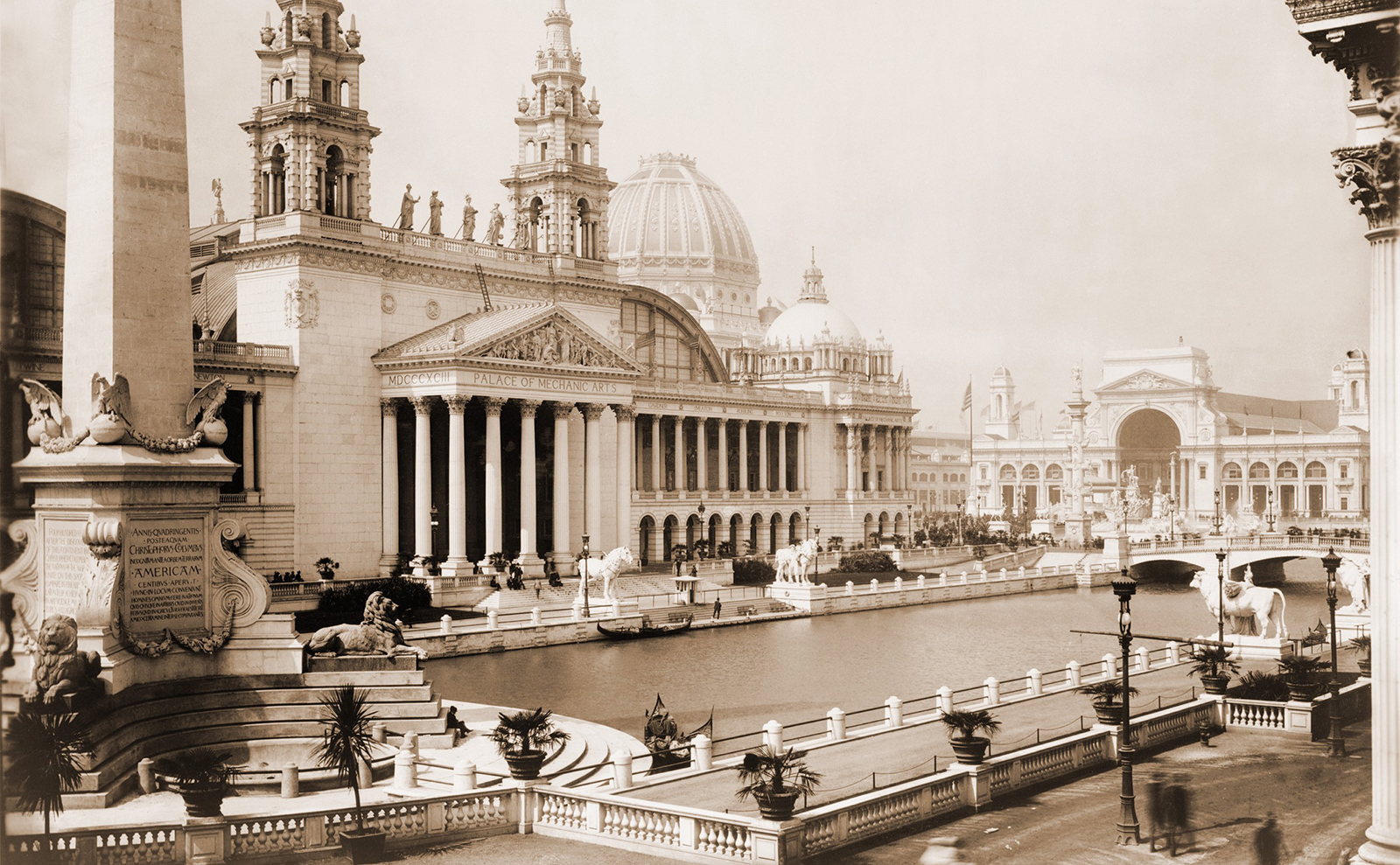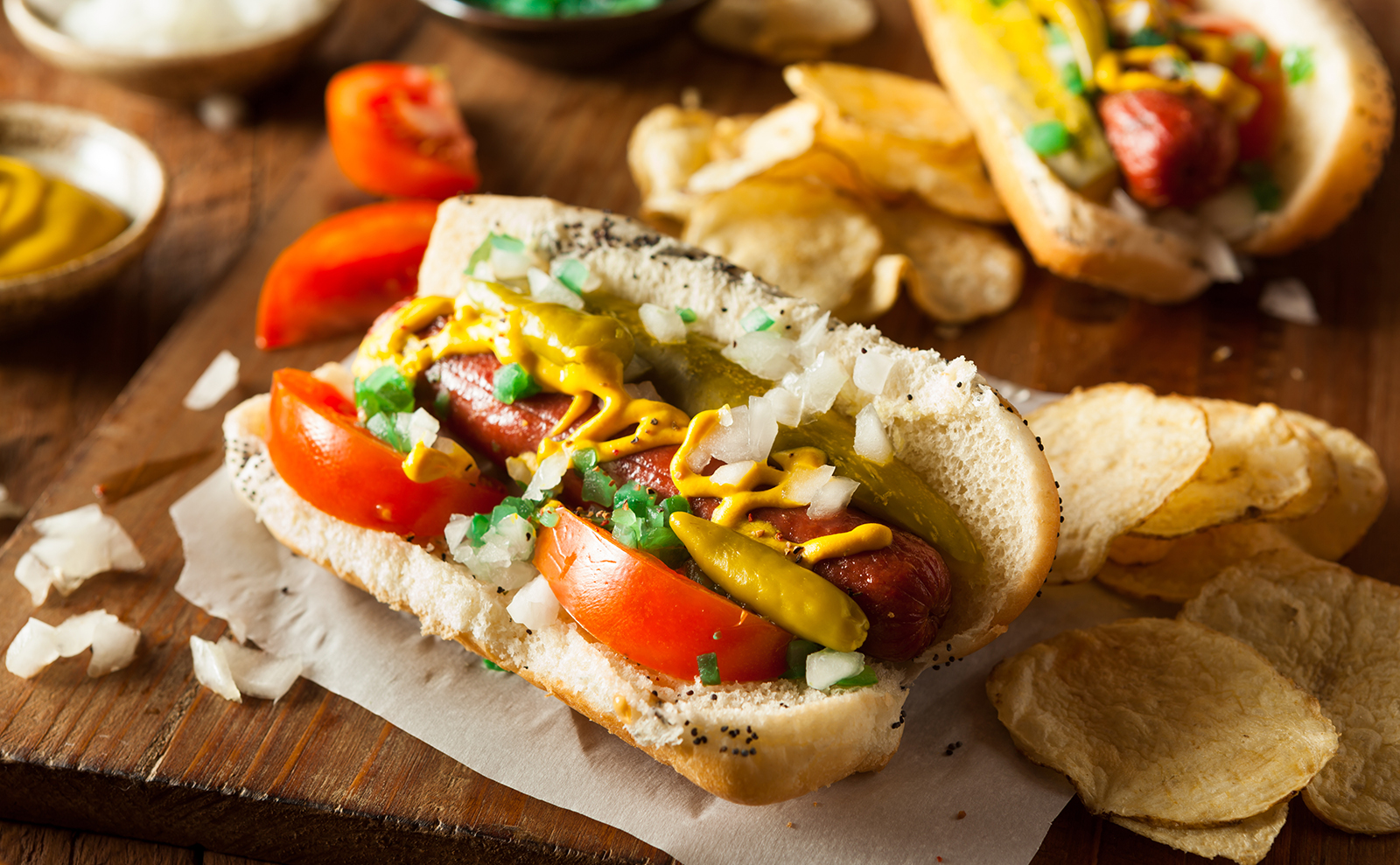
Armchair travel around the world!
Start your reading adventures with our FREE Reading Atlas.

- Around the World in 14 Books
- 7 Thrilling Book Series
- 6 Audiobooks That Are Like Theater For Your Ears



Food and drinks are some of the easiest ways — and the most fun— to vicariously experience another culture. When you add a great book to the mix, you've got the makings of a perfect evening. In Food+Fiction, we recommend a delicious read and a related recipe so you can try the taste of different destinations in your own kitchen.
This post is part of our Food+Fiction series.

Erik Larson’s ‘The Devil in the White City’ tells the tall (and true) tales of the 1893 Columbian Exposition, a.k.a., the Chicago World’s Fair. Among the many innovations introduced at the Fair was the all-beef hot dog.
In the late 1800s, Chicago was the meatpacking capital of the world. The city literally fed the entire country, and the vast majority of the stockyard workers and butchers were immigrants from Europe. They came in waves from Lithuania and Germany, and they brought their food traditions with them. Made from pork and beef trimmings, German frankfurters were an ideal industrial food. Around 1860, national hot dog brands we still know and love — Armour and Oscar Mayer — were rolling out the dogs.
But a second wave of immigration brought Jewish immigrants to the Midwest, and the spicier, snappier all-beef version of the hot dog hit the streets — and the Fair. Two Jewish immigrants from the Austro-Hungarian Empire — Samuel Ladany and Emil Reichl — set up their hot dog cart at the Columbian Exposition and were so successful, they were able to invest in a bigger business that gave the world Vienna Beef.
Hot dogs continued to be a beloved treat. But after the Wall Street Crash of 1929, the hot dog became a necessity; it was the one dish almost everyone could afford. A visionary vendor realized the hot dog could become a whole meal with a few key additions, so the bun was soon stacked with vegetables and pickles — the hot dogs were ‘dragged through the garden.’
Over the decades, the components of the true Chicago-style dog were codified. Hot dogs are to Chicago as pizza is to New York, so you’d best get the details right.
The dog: All-beef hot dogs with a natural beef casing is the only way to go. It should have a snappy skin, and if you can get your hands on the Vienna Beef brand, all the better.
The bun: The bun must be dusted with poppy seeds for their slightly nutty taste and light crunch.
The mustard: Classic yellow mustard is the only way to go.
The pickle: A crunchy, garlicky, briny dill pickle is your only option, and for total - authenticity, a kosher dill is best.
The relish: In Chicago, the pickle relish is neon green. It’s sweet, tart, and includes blue dye no. 1 for the lurid color. It’s pretty tough to find outside Chicago, so make do with any relish you like.
The sport peppers: Sport peppers are the most authentic choice. They’re pickled versions of the small Capsicum annuum and are hot, but not too hot. These can also be tricky to find, so pickled jalapeños will do in a pinch.
The onions: White onion is what you want, and it should be chopped just before eating for the perfect balance of bite and sweetness; cut onions lose their sweetness as time goes by.
The tomatoes: Any variety of tomatoes will work — remove excess liquid and seeds, so they don’t make your lovely poppy-seed bun go soggy.

Serves 3-6. Prep 15 minutes.
Warm the dogs. Place the hot dogs in a saucepan with enough water to cover them. Bring to a boil, then place a lid on the pan and turn off the heat. Let the dogs sit in the warm water until you’re ready to assemble.
Prep the toppings. Finely dice the onion. Cut the tomatoes into 6 wedges. Gather the remaining ingredients: pickles, mustard, relish, peppers, celery salt, so they’re ready to go.
Prep the buns. Preheat the oven to 350F/175C. Line a baking sheet with parchment paper. Place the buns, split-side down, on the baking sheet and brush the outside of each bun with butter. Sprinkle with poppy seeds. Bake until warm, about 5 minutes. Set aside.
Assemble! Dry the hot dogs with paper towels and place in a bun. Then place a pickle on one side of each hot dog and 2 tomato wedges on the other side. Decorate the top with mustard; bonus points for a zigzag; add a dollop of relish. Add the diced onion and top with a pepper. Sprinkle the whole shebang with a little celery salt.
They saw even more ungodly things—the first zipper; the first-ever all-electric kitchen, which included an automatic dishwasher; and a box purporting to contain everything a cook would need to make pancakes, under the brand name Aunt Jemima’s. They sampled a new, oddly flavored gum called Juicy Fruit, and caramel-coated popcorn called Cracker Jack. A new cereal, Shredded Wheat, seemed unlikely to succeed — ‘shredded doormat,’ some called it — but a new beer did well, winning the exposition’s top beer award. Forever afterward, its brewer called it Pabst Blue Ribbon. — Erik Larson
It was to be an extravaganza like the world had never seen: the 1893 Columbian Exposition, a.k.a., the Chicago’s World’s Fair. Marvels from all over the globe would be on display in a sparkling White City designed to burnish Chicago’s reputation and establish it as the country’s premier place to be. But on the way to opening day on 1 May 1893, the fates of two men became irrevocably linked: Daniel H. Burnham, the visionary, ambitious architect behind the Fair’s construction; and H.H. Holmes, America’s first serial killer. {more}
This narrative history (447 pages) was published in February of 2003 by Crown. The book takes you to turn-of-the-century Chicago. Melissa read The Devil In The White City and loved it; it wouldn't be on our site if she didn't recommend it.
Bookshop.org is an online bookstore with a mission to financially support independent bookstores and give back to the book community.
Top image courtesy of Everett Historical/Shutterstock.
Want to keep up with our book-related adventures? Sign up for our newsletter!
Can you help us? If you like this article, share it your friends!
Strong Sense of Place is a website and podcast dedicated to literary travel and books we love. Reading good books increases empathy. Empathy is good for all of us and the amazing world we inhabit.
Strong Sense of Place is a listener-supported podcast. If you like the work we do, you can help make it happen by joining our Patreon! That'll unlock bonus content for you, too — including Mel's secret book reviews and Dave's behind-the-scenes notes for the latest Two Truths and a Lie.
Join our Substack to get our FREE newsletter with podcast updates and behind-the-scenes info — and join in fun chats about books and travel with other lovely readers.

We'll share enough detail to help you decide if a book is for you, but we'll never ruin plot twists or give away the ending.
Content on this site is ©2025 by Smudge Publishing, unless otherwise noted. Peace be with you, person who reads the small type.